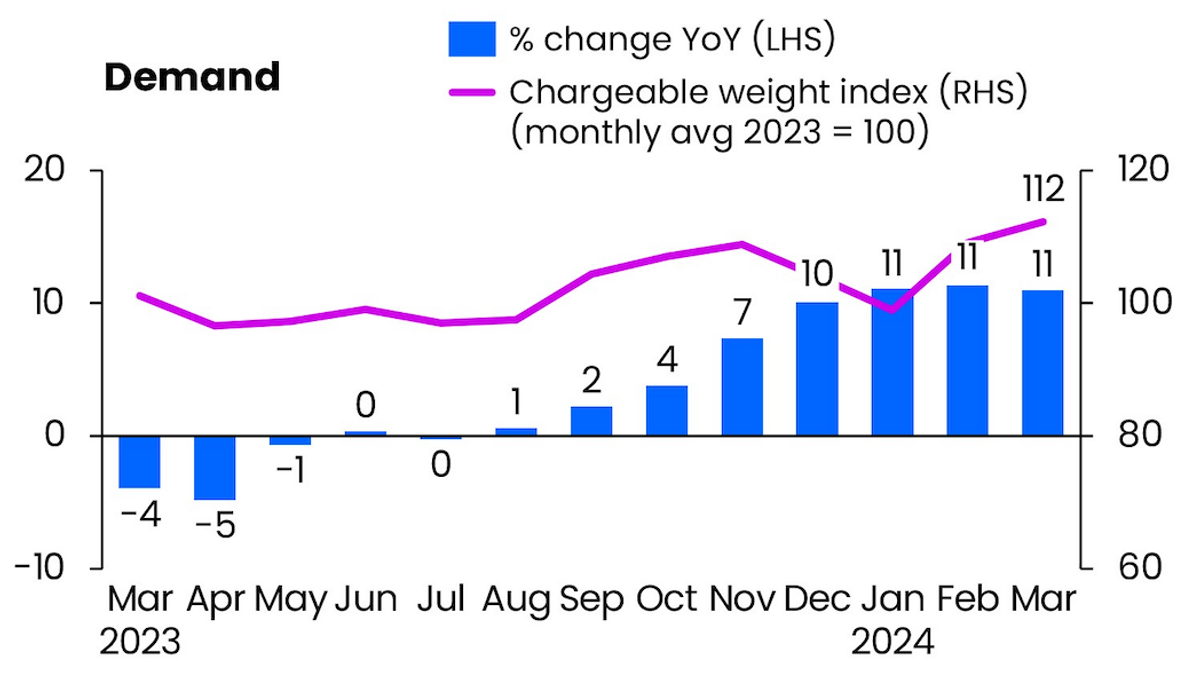Global air cargo market demand rose +11% year-on-year for a third consecutive month in March as buoyant e-commerce volumes and concerns over the impact of conflict in the Red Sea region on ocean freight services delivered an unexpected first quarter bonus for forwarders and airlines, according to the latest weekly market data from Xeneta.
In what are typically weaker months of the year for the airfreight industry, these higher volumes outpaced growth in capacity supply in Q1, which increased by +8% YoY. In turn, this produced a jump in the global dynamic load factor, which is Xeneta’s measurement of cargo capacity utilization based on volume and weight of cargo flown alongside capacity available.
Load factor in the opening three months of 2024 rose +2% pts YoY to 59%, and March performance has shown similar growth, edging up to 61%.
“While this latest monthly data should be balanced against the lower base recorded in the corresponding month of 2023, when we saw weakened global manufacturing activities, Q1 2024 has still seen a surprisingly busy airfreight market. The level of demand in the first quarter doesn’t indicate a market which is running out of steam so far,” Niall van de Wouw, Xeneta’s Chief Airfreight Officer, said in a release.
“The question is, should we be surprised by it, or should we get used to it? Although the market didn’t benefit immediately, the Red Sea disruption was clearly a factor in these latest figures. Airfreight growth was primarily driven by increased volumes from the Middle East and South Asia as shippers shifted services from ocean to air to avoid Red Sea delays. We also cannot underestimate the importance of e-commerce growth, which shows no sign of abating on its most prominent lanes.”
Subsequently, the average global airfreight spot rate in March increased +7% from the previous month to USD 2.43 per kg.
March data shows freight forwarders continued to purchase a larger share of volumes on the spot market as they kept their options open pending an anticipated cooling down of the Red Sea disruption, and to benefit from the traditionally more imbalanced demand/supply ratio caused by the influx of airline belly capacity at the start of summer schedules. In the first quarter of 2024, the share of volumes in the spot market accounted for 43% of the total market – compared to 31% in the corresponding pre-pandemic era - as expectations of a ‘normalization’ of the cargo market prompted freight forwarders to take short-term risks in the spot market in the hope of longer-term gains.
















